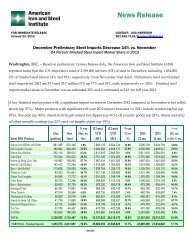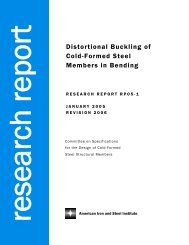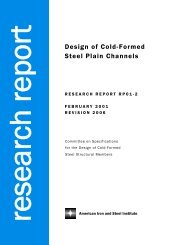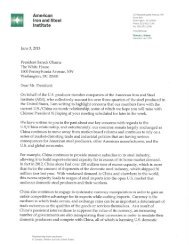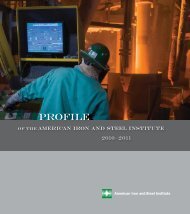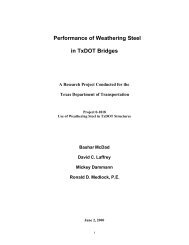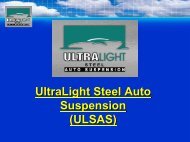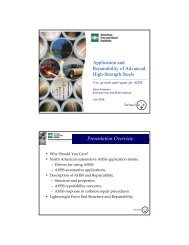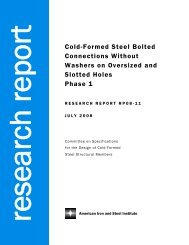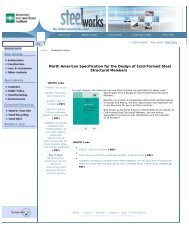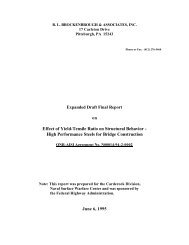Environmental Life Cycle Assessment of Southern Yellow Pine ...
Environmental Life Cycle Assessment of Southern Yellow Pine ...
Environmental Life Cycle Assessment of Southern Yellow Pine ...
Create successful ePaper yourself
Turn your PDF publications into a flip-book with our unique Google optimized e-Paper software.
EXECUTIVE SUMMARY<br />
800 <br />
thousands <strong>of</strong> tons <strong>of</strong> CO2 eq. <br />
600 <br />
400 <br />
200 <br />
0 <br />
-‐200 <br />
-‐400 <br />
-‐600 <br />
BAU SPR <br />
0 10 20 30 40 <br />
Time Horizon (years) <br />
Figure 3. A whisker plot <strong>of</strong> category indicator results for Global Climate Change (Net). The 90% confidence <br />
intervals are shown for all results in the time horizon, along with the first and third quartiles for each <br />
scenario. <br />
As this figure shows, there is an overlap in category indicator results for both the 90% confidence <br />
intervals, and the 50% confidence intervals, due to the uncertainties <strong>of</strong> the results in BAU and SPR <br />
scenarios. There are two main factors driving this uncertainty: <br />
• For the SPR scenario, the inclusion <strong>of</strong> the secondary consequences from avoided CCA <br />
production. If the secondary consequences are less significant than projected in these <br />
findings, the results become ambiguous between the two scenarios. <br />
• For both the BAU and SPR scenarios, the large uncertainty in the S-‐CF (the GWP). As noted, <br />
the IPCC estimates that GWPs have an uncertainty <strong>of</strong> ±35%, regardless <strong>of</strong> the time horizon <br />
used. This is a significant level <strong>of</strong> uncertainty; regardless <strong>of</strong> the inclusion <strong>of</strong> secondary <br />
consequences in the SPR scenario, the uncertainty in the S-‐CFs means that the two scenarios <br />
have a close overlap. This highlights the fact that the uncertainty in results for Global <br />
Climate Change, and more generally, those for carbon footprints, is much higher than is <br />
commonly understood. <br />
Based on this uncertainty analysis, it is estimated that there is an 70% likelihood that the SPR <br />
scenario has a lower indicator result for Global Climate Change (Net) after 40 years. These results <br />
show that the SPR scenario has an advantage over the BAU scenario for this category indicator, the <br />
scale <strong>of</strong> which is dependent on the size <strong>of</strong> the secondary consequences resulting from the <br />
introduction <strong>of</strong> steel utility poles. This result casts into question the common assumption that treated <br />
wood products have a lower carbon footprint than steel products. Depending on the market effects <br />
in the SPR scenario, there may be a marked benefit <strong>of</strong> the use <strong>of</strong> steel poles. <br />
April 2013 | ©SCS Global Services <br />
ES-‐ 12



